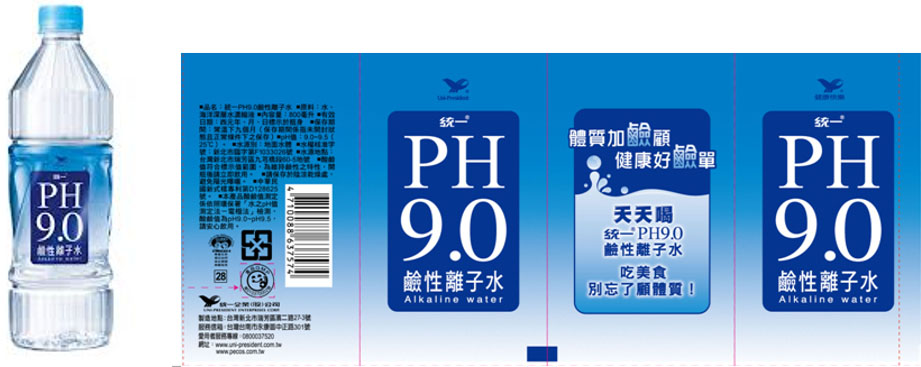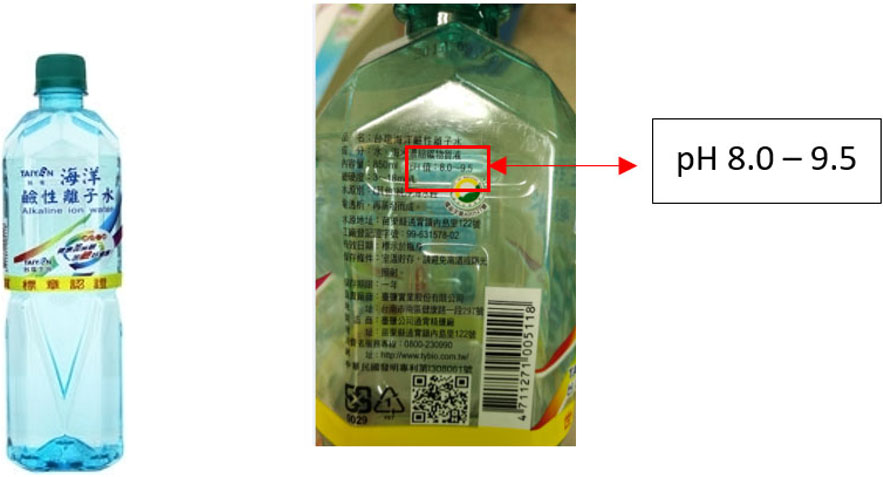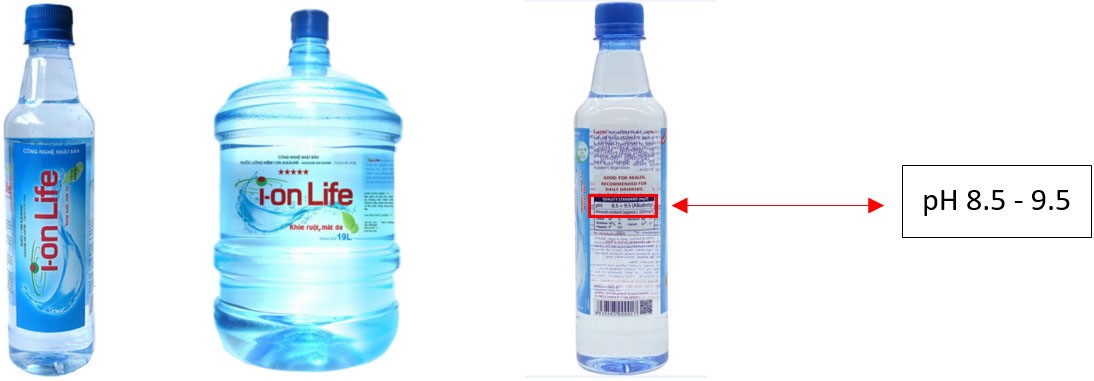 |
| 電解機能水技術領導者 |
瓶裝水的pH值
國際上對自來水有pH值為6.0-8.5的限制,原因是由於自來水輸送的水管可能發生管線腐蝕的問題影響水質,和可能對公眾健康的影響。然而,自來水經過濾處理之後(經過濾或淨化過程),這pH值的限制不再適用於自來水。
瓶裝水需使用國家合格的原水,經過濾處理與消毒殺菌後再充填完成與販售,因此將自來水對pH值6.0-8.5的限制規定,使用在瓶裝水是一種誤會。
關於瓶裝飲用水的pH值標準,我們樂意提供以下資訊:
1. 食品法
根據“食品法”,瓶裝飲用水被視為食品,因此與其他食品一樣,無論pH值如何,瓶裝飲用水必需是安全和可食用。
在美國,瓶裝水也受到FDA的食品監管。根據FFDCA(聯邦食品,藥品和化妝品法),製造商有責任生產安全、有益健康和確實標示的食品,包括瓶裝水產品。 FDA已在聯邦法(21 CFR)第21章中製定特定的瓶裝水質量標準。該指南未對瓶裝水pH值有限制的規定。
按此導向FDA 21CFR完整版的連結:
https://www.accessdata.fda.gov/scripts/cdrh/cfdocs/cfcfr/CFRSearch.cfm?fr=165.110
2. 世界衛生組織
根據公佈的WHO飲用水指南(第409頁)表明:
「沒有建議基於健康的pH值。 沒有設立準則值的原因是因為飲用水沒有健康的問題」。
以下連結是世界衛生組織的完整版指南:
http://apps.who.int/iris/bitstream/handle/10665/44584/9789241548151_eng.pdf;jsessionid=8CDC0D07EF25B04CC9810495536CD1EF?sequence=1
附件(1):Page 409世衛組織飲用水指南。
3. 美國FDA
此外,根據FDA政府官方網站的資訊,FDA和EPA都負責飲用水的安全。 EPA管理公共飲用水(自來水),而FDA管製瓶裝飲用水。
以下連結是FDA官方網站:
https://www.fda.gov/Food/ResourcesForYou/Consumers/ucm046894.htm
基於21CFR,FDA沒有提及任何對於瓶裝水pH值的限制,儘管EPA建議自來水的pH值為6.5-8.5。
4. 日本的法律及法規
鹼性離子水是以瓶裝水標準來管理,其中對瓶裝水的pH值沒有限制的規定。 詳情請參閱日本法律翻譯網站的連結。
以下連結是日本法律翻譯網站:
http://www.japaneselawtranslation.go.jp/
5. 台灣法律法規(供參考)
在台灣,包裝飲用水及盛裝飲用水衛生標準沒有對瓶裝水的pH值有限制。
此外,飲用水水質標準具有pH6.0~8.5的限制,但飲用水經過濾處理後沒有任何pH限制。 如在家庭或機場,學校等公共場所安裝和供應飲用水的飲水機或水設備皆沒有任何pH限制。
根據自來水法,自來水的pH值限制在6.0-8.5之間,這種限制的原因是因為自來水流動的水管可能會發生管線腐蝕的問題,並可能導致自來水酸化,由於輸送水管可能會鏽蝕或污染等,自來水可能會影響公眾的健康。
然而,自來水經過濾或淨化過程處理之後,pH限制不再適用於該處理後的自來水。
以下連結是台灣飲用水法律法規的完整版本:
http://law.moj.gov.tw/ENG/LawClass/LawAll.aspx?PCode=O0040019
附件(2): 台灣關於pH的法律和法規。
6. 鹼性瓶裝水產品正在全球的銷售
眾所周知,世界上大多數國家對瓶裝飲用水是沒有pH值限制的規定。
事實上,鹼離子性水產品已在全球許多國家銷售,包括美國,加拿大,澳大利亞,新西蘭,歐盟國家,日本,台灣,中國和越南等。
目前銷售的鹼性水產品的一些例子包括(相關產品瓶標並參閱附件3):
- 美國Essentia(pH 9.5)
- 日本麒麟鹼性離子水(pH 9.5)
- 台灣統一 pH 9.0
- 台灣鹽(Taiyen)鹼性離子水(pH 9.5)
- 越南Ion Life(pH 9.5)
7. 家用水電離器
生產pH值為8.0-9.8電解鹼性水的家用電解機已在全球銷售逾四十年以上。在日本和韓國,電解機已被日本和韓國衛生部授予醫療器械認證。這些家用電離器也在阿聯酋迪拜銷售。基於科學與醫學臨床認證,鹼性水有效改善腹部問題(日本厚生省認證效能效果為消化不量、胃腸內異常發酵、制酸、胃酸過多等)。
附件(4):日本MOH認證家用電解機作為醫療器械(日文版)。
附件(5):韓國家用電解機認證(韓文版)。
附件
附件(1):Page 409世衛組織飲用水指南。
In the event of a spill, it may be necessary to carry out a context-specific assessment of the risk to health. The fact that petroleum products are complex mixtures of many individual hydrocarbons is a complicating factor in determining the potential risks to consumers. The traditional approach of evaluating individual chemicals in assessing the risks from drinking-water is therefore largely inappropriate. In order to overcome this difficulty, it is more practical to consider a series of hydrocarbon fractions and to determine appropriate tolerable concentrations for those fractions. The most widely accepted approach is that developed by the Total Petroleum Hydrocarbons Criteria Working Group in the USA, which divided total petroleum hydrocarbons into a series of aliphatic and aromatic fractions based on the number of carbon atoms and the boiling point, to give equivalent carbon numbers. This pragmatic approach provides a suitable basis for assessing the potential health risks associated with larger-scale contamination of drinking-water by petroleum products. The allocation of 10% of each of the reference doses, equivalent to TDIs, for the various fractions to drinking-water provides a conservative assessment of the risks. Although the approach is based on the analysis of hydrocarbon fractions, most are of low solubility, and the most soluble fractions, consisting largely of lower molecular weight aromatic hydrocarbons, will be present in the greatest concentration.
pH
No health-based guideline value is proposed for pH. Although pH usually has no direct impact on consumers, it is one of the most important operational water quality parameters (see chapter 10).
| Reason for not establishing a guideline value | Not of health concern at levels found in drinking-water |
| Additional comments | An important operational water quality parameter |
| Assessment date | 1993 |
| Principal reference | WHO (2007) pH in drinking water |
2-Phenylphenol and its sodium salt
2-Phenylphenol (CAS No. 90-43-7) is used as a disinfectant, bactericide and virucide. In agriculture, it is used in disinfecting fruits, vegetables and eggs. It is also used as a general surface disinfectant in hospitals, nursing homes, veterinary hospitals, poultry farms, dairy farms, commercial laundries, barbershops and food processing plants. 2-Phenylphenol is readily degraded in surface waters, with a half-life of about 1 week in river water.
附件(2):台灣關於pH的法律和法規。
網址:
http://law.moj.gov.tw/ENG/LawClass/LawAll.aspx?PCode=O0040019
D. Limit range of residual chlorine (Limited to water supply systems using chlorine as disinfectant):
| Item | Maximum limit | Unit |
|---|---|---|
| Free available residual chlorine | 0.2-1.0 | milligrams/liter |
E. Range for pH index (water treated by stationary continuous water supply equipment on public or private premises are not be subjected to this limitation):
| Item | Maximum limit | Unit |
|---|---|---|
| Hydrogen ion concentration index (pH value) |
6.0-8.5 | No unit |
附件(3):世界各地的鹼性水產品圖片。
目前市場上出售的鹼性離子水
a) 美國的Essentia Water(pH 9.5)

b) 日本麒麟鹼性離子水(pH 8.5 - 9.3)

網址:https://www.kirin.co.jp/company/english/about/kirinbeverage/
c) 台灣統一的鹼性離子水(pH 9.0)

網址:https://www.uni-president.com/
d) 台灣台鹽海洋鹼性離子水(pH 8.0-9.5)

e) 越南的ION LIFE離子水(pH 8.5-9.5)

附件(4): 日本MOH認證家用水電離器作為醫療器械。

附件(5): 韓國家用水電離器認證。

 繁體中文
繁體中文  简体中文
简体中文  English
English 




